An amplifier is the essential link between a source (such as a CD player or turntable) and a pair of speakers in any hi-fi separates system. There is no sound without it. Simples. You’ve come to the correct place if you prefer the simpler, more convenient, and space-saving alternative of a one-box stereo integrated amplifier over a pre/power combination.
2025’s Top Stereo Amplifiers: The Best Integrated Amplifiers Available
We’ve compiled a list of the top integrated amplifiers on the market, with a wide range of features and costs. We’re confident that there will be something here to fit all budgets and needs, whether your music system consists of a low-cost turntable and entry-level speakers or high-end equipment.
How do you pick the greatest stereo amplifier?
Stereo amplifiers are no longer as basic as they once were, with merely analogue inputs and outputs, as well as a pair of speaker terminals.
As laptops, smartphones, and audio streaming services have become more popular music sources, the integrated amplifier has evolved to keep up with the trends. Due to the resurgence of vinyl, many now include built-in digital-to-analogue converters (DACs) with digital inputs for connecting to laptops, hard drives, and digital-savvy hi-fi sources, as well as phono stages for turntables. Some also integrate network streaming, making them a full-fledged system with no need for additional speakers. So your requirements, as well as the connectivity of any existing equipment, will define what you need.
Consider how nicely your amplifier and speakers complement each other. The impedance and sensitivity of the speaker, as well as the amp’s power output, influence the speaker/amp interaction. Visit our thorough guide on how to choose and set up a stereo amplifier for more information on system matching.
Your hi-fi system should revolve around an amplifier. Everything comes into it and goes out of it. There is a lot of mysticism around amplifiers, as well as a lot of related jargon that has developed over time, but the good news is that the standard is now extremely high – even for inexpensive amps. We’ve highlighted this year’s best models below, and no matter what your budget is, there’s a model here that will boost your sound system. We’re only looking for integrated amplifiers here, no discrete power or preamplifiers, and we attempted to keep pricing as low as possible.
And to complete your system, check out our lists of the Best Bookshelf Speakers and Best Floorstanding Speakers.
What is an Integrated Amplifier?:
An integrated amplifier is a single box that houses both a power amplifier and a pre-amplifier. This is the beating heart of your hi-fi system, connecting your sources (turntable, CD player, streaming device, etc.) and driving your speakers. An integrated amplifier takes up significantly less room, streamlines your system, and can save you a lot of money. Different integrated amplifiers have different features, so it’s crucial to know what you need before buying.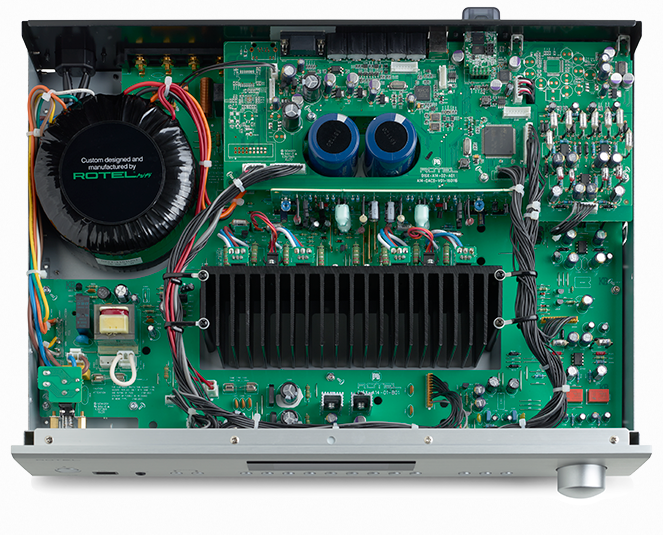
Integrated Amplifier Features:
Before buying an built-in amplifier it is price contemplating the principle features and features you want in your system or would possibly want sooner or later. Let’s run via a couple of of the key ones below:
Analogue Audio Inputs
- RCA Inputs – the usual for connecting analogue elements
- RCA Phono Inputs – for connecting a turntable, without a phono preamp.
- Balanced XLR Inputs – offering a balanced sign path for high-end elements & skilled audio
Digital Audio Inputs
- Optical – frequent for TV connections
- Coaxial – sometimes used to attach your supply to a DAC (digital to analogue converter)
- USB Type B – for connecting computer systems
- USB Type-A – for cellular units or USB thumb drive
- Ethernet – for direct connection to the Internet and community connections
Wireless Connectivity
- Wifi – for connecting to wireless networks. Allows for streaming and accessing network-connected units.
- Bluetooth – for connecting through Bluetooth to smartphones, tablets and computer systems.
- Specialty Services – i.e. Apple AirPlay, Chromecast
Outputs
- Headphone Jack – for connecting headphones
- Subwoofer Outputs – for including a powered subwoofer
- Pre-Amp Output – for including a brand new power amp to your system. Useful when you purchase new speakers that want extra power or transfer your system to an even bigger area.
- A + B Speaker Connectors – for connecting two pairs of speakers. Great for powering a second pair in one other room or bi-wiring a appropriate pair of loudspeakers.
As you possibly can see, built-in amplifiers could be extremely versatile. Having a good thought of what features you want will assist you to select the precise amp from the beginning and prevent large {dollars} sooner or later.
How Much Should I Spend?
This is a very personal subject, but there’s no doubting that your budget will influence your amplifier selection. Integrated amplifiers can cost anything from a few hundred dollars to tens of thousands of dollars (and even millions of dollars!). While pricing is a good indicator, spending a lot of money on amplifiers does not guarantee you’ll get the greatest equipment, and vice versa.
Getting the amp you want is a careful balance of a good build and the features you require. We’ve listed a number of excellent integrated amplifiers at various price points, each with its own set of features and performance characteristics. We can confidently stand behind all of these products because of our years of industry knowledge and several hours of testing. Check them out and see which one is right for you!
Top Stereo Amplifiers – Full Review
#1. Peachtree Audio nova300 – Best Overall Stereo Amp
Check on Amazon
Main Features
No products found.
Fulll Review
It has thunderous bass, sharp highs, and a richness that other amps can only hint at. A clean digital circuit and an ESS Sabre digital-to-analog converter produce some great sound, especially when it comes to smoothing out the edges of harsh recordings. This is a real audiophile amplifier that delivers clear clarity even at high volumes. Our is an upgraded version of the nova220, a popular amp that previously topped this list. We’d be insane not to put it in first place, even if it does remove the visible tube from the 220SE, which we loved.
This one isn’t going anywhere for a long time, and perhaps the folks at Peachtree Audio will put it up on Amazon shortly. One of its most significant advantages? It has sound quality comparable to much more expensive amplifiers. Although audiophiles may disagree, we believe its sound quality is equivalent to the more expensive Anthem model below.
When the impedance is 4 ohms and the frequency varies between 20 Hz and 20 kHz, harmonic distortion is 0.04 percent. The TDA7498E stereo amplifier can accept signals from a variety of sources, including phones, media players, televisions, digital assistants, CD players, and streaming services. The amplifier’s front-end has a simple design with only one switch to regulate the on/off state and one dial to control the output level. Finally, the TDA7498E accepts a wide range of analogue inputs, including bare wire, banana plugs, spade lugs, and pin terminators. It’s a class D amplifier containing capacitors, which are responsible for the amplifier’s typical analogue tone.
Check on Amazon
#2 Best Value: Onkyo M-5010 Stereo Amplifier
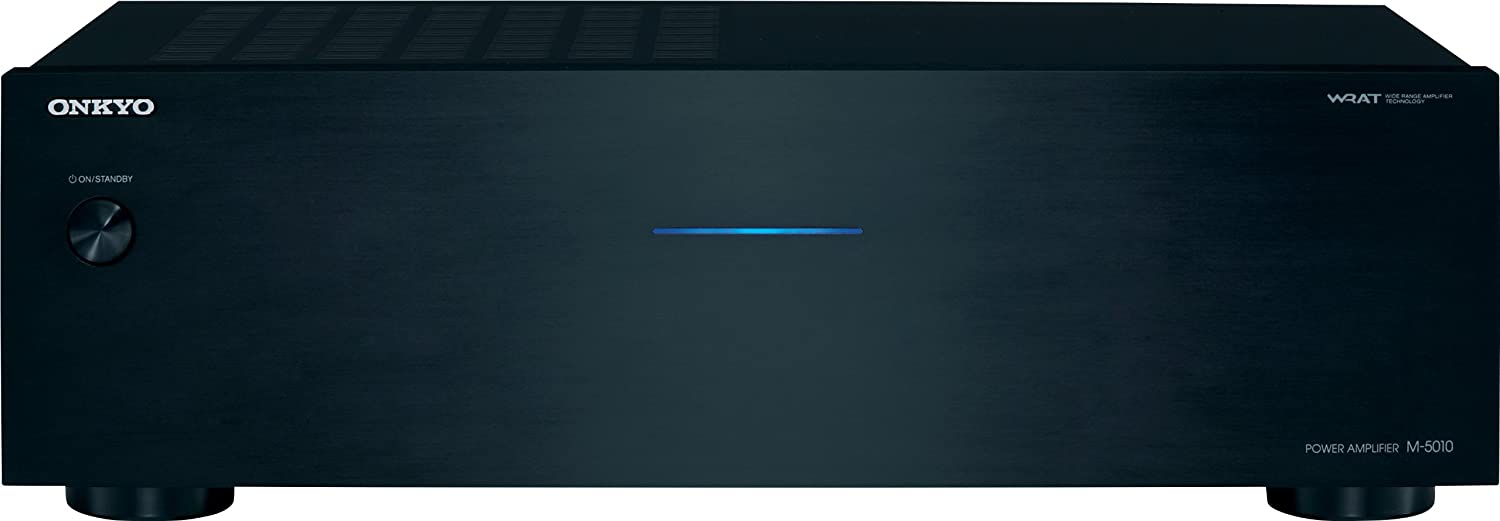
Check on Amazon
Main Features
- 75 W/Channel (8 Ohms, 1 kHz, 0.08% THD, 2 Channels Driven, FTC)
- Three-Stage Inverted Darlington Circuitry to Reduce Distortion
- Delivers Multi-Zone Audio with Selected Onkyo A/V Receivers. Damping Factor : 60 (Front, 1 kHz, 8 Ohms)
- Daisy-Chain with Additional M-5010s for Bi-Amping or Multi-Zone Audio
- Impedance Selector Switch (4-8 Ohms and 8-16 Ohms).Signal-to-Noise Ratio:110 dB (Line, IHF-A)
Fulll Review
The Onkyo M-5010 is a straightforward amplifier with two channels that is intended to deliver signals to speakers that are unambiguous and powerful. The amplifier has the capacity to enhance two signals up to 75 watts each with a total harmonic distortion of 0.08 percent when the impedance is set to 8 ohms and the frequency is set to 1000 hertz. The Onkyo amplifier is capable of producing multi-zone audio when used in conjunction with certain Onkyo AV receivers, which enables 11-channel surround sound.
This stereo amplifier makes use of a three-stage inverted Darlington circuit, which helps to reduce distortion to such a low degree that even the most seasoned audiophiles won’t notice the difference. Daisy-chaining the M-5010 with other M-5010 devices allows for bi-amping or audio distribution across multiple zones. In addition to that, it features an impedance selector switch that gives you the option of processing incoming signals with either 4-8 Ohms or 8-16 Ohms resistance levels.
A signal-to-noise ratio of 110 dB is considered to be very good. The Onkyo M-5010 is well-suited to dealing with the rapidly changing dynamics that are associated with movie soundtracks, as well as providing a nuanced and musical performance for other forms of audio content such as music of any genre. This is because the Onkyo M-5010 features a discrete analogue circuit design.
Check on Amazon
#3. Stereo amp with DAC – Cambridge Audio CXA61

Check on Amazon
Main Features
- ✓ FOR TRUE HI-FI STEREO EXPERIENCE - CXA61 is designed to be unmatched in sonic ability, on-board features, and build-quality. Its audio is a true and emotional delivery across thumping basslines, syncopated jazz rhythms, or distinctive vocals.
- ✓ DESIGNED TO BE AN EXPERIENCE - CXA61 has been engineered, refined and finessed with only one objective in mind: to deliver the most thrillingly authentic sound you’ve ever encountered. It brings you closer to the music you love.
- ✓ PROFESSIONAL-GRADE POWER - Oversized toroidal transformer gives an even, low-noise current without distortion or stress. CXA61 handles 8-ohm and 4-ohm speakers, delivering all the musical peaks and nuances you expect to hear.
- ✓ CONNECT WIRED OR WIRELESSLY - Bluetooth wireless capability lets you stream from smartphones, tablets, and computers. Improved aptX HD encoding helps enhance audio quality of music streaming from devices.
- ✓ DIGITAL SOURCE FLEXIBILITY - High Quality ESS Sabre SE9010K2M DAC chip is compatible with 32-bit/384kHz PCM files and up to DSD 256 data streams. Connect digital sources directly via TOSLINK and Coaxial.
Fulll Review
The Cambridge Audio CXA61 is a great amplifier with fantastic digital capabilities, and it is one of the company’s products. It is the firm’s most recent product in the CX series, and it overcomes virtually all of the issues we encountered with the CXA60 amplifier. You’ll have access to a wide range of analogue and digital inputs, all contained within an expertly built and distinctively designed interface. But, most importantly, you get a fantastic audio experience. The audio quality is bursting with energy and raucousness, giving the tracks a genuine feel.
This is not an amplifier for those who, in any way, shape, or form, seek reference-quality sound. Consider the Parasound NewClassic 200 Integrated or Cambridge’s CXA81, an 80-watt amplifier with a more subdued sound. Both of these alternatives are excellent possibilities if you want something with a more neutral appearance. You could make the case that the CXA61 amplifier outperforms the Peachtree Audio nova300 in terms of performance, and you’d be right. On the other hand, it lacks the nova300’s raw strength and vitality, and we couldn’t help but think that the price was overly high for what it offered.
It costs $400 more than the original CXA60, with a price tag of $999. To be fair, if you’re prepared to put up with a few more annoyances, such as the need for a USB dongle for Bluetooth, you can save money and get that amp instead of the one you were considering. Despite this, the Cambridge Audio CXA61 is still one of the most enjoyable amplifiers we’ve tested so far this year. It’s simply amazing.
Check on Amazon
#4. Best under-$500 stereo Amp – Onkyo A-9150
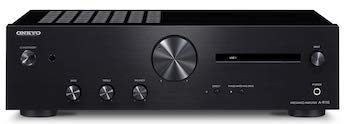
Check on Amazon
Main Features
- 60 W/Ch. (4 ohms, 20hz-20khz, 0.08% THD, 2 channels Driven, FTC) from high current power supply transformer and two High-grade customized capacitors
- Discrete Spectra module produces high instantaneous voltage for immersive sound Staging, improved instrument separation, and lively transient response
- Akm (AK4452) 768 kHz/32-bit digital-to-analog converter brings CD's and digital sources to life. For vinyl, a dedicated mm/MC circuit board and high quality discrete head amp are present.
- DIDRC Filter Prevents Ultra-high-frequency Distortion Affecting Audible Sound
- 4 gold-plated analog RCA Audio inputs plus mm/MC phono input, 2 optical digital inputs, 2 coaxial digital inputs, 2 pairs of gold-plated speaker posts (a+b) to suite thick cables with banana plugs.
Fulll Review
The original A-9150 was already on our list, and the new Onkyo A-9150 offers a number of significant improvements over its predecessor. Despite the fact that the housing has been updated, the device’s interior has undergone the most significant changes. The vast majority of these include improving amplifier circuitry and designing new circuits to reduce the time it takes for an audio signal to move from one location to another.
The result was a sound that was simply exceptional. For an amplifier that costs just more than $300, you get audio quality that is quite astounding. This is without a doubt the best option in this price range, and the inclusion of a phono stage among its many connections is a nice addition. However, we wish the A-9110, the most affordable model in the series, included a digital audio converter (DAC). Even a cheaper choice would have been preferable. You will need to purchase your own converter due to the lack of one, but the cost should not be exorbitant.
The fact that the more expensive A-9150 variant, which is imaginatively referred to as the A-9150, includes a DAC and allows a direct connection to a tablet or personal computer, makes this alternative extremely annoying. Regardless, this is a significant upgrade, and it is a shoe-in to win the title of best budget amplifier for the vast majority of users.
Check on Amazon
#5. Best Selection for Vinyl – Denon PMA-600NE

Check on Amazon
Main Features
- ENJOY MASTERFUL AUDIO PERFORMANCE EVEN AT THIS PRICE POINT – Divided circuitry in this home stereo amplifier allows you to disengage digital circuits, turning off Bluetooth for an undivided analog experience
- SLIM DESIGN, INTEGRATED AMP – Enclosed in a vibration-resistant design, this Denon amplifier PMA-600NE powers the widest range of speakers (70W at 4 ohms); reproduces audio with utmost accuracy and superiority for a multi-dimensional sound experience
- BLUETOOTH SUPPORT AND DIGITAL CONNECTIVITY – Extend your audio experience with unlimited sources. 2 Optical, 1 Coaxial & 1 phono input to connect CD Player, Blu-Ray turntables & more. Pairs with your smartphone via bluetooth home stereo built-in DAC
- LISTEN TO SONGS WITH IMPECCABLE PRECISION – Bluetooth amplifier for speakers, Powered by Denon Advanced High Current (AHC) push-pull circuit power amplifier; BALANCES HIGH POWER & MUSIC DETAILING PERFECTLY for clean, rich, immersive audio
- HIGH-GRADE AUDIO COMPONENTS – More than a 100-year legacy of designing premium audio components; trust your Denon PMA-600NE home amplifier has undergone rigorous testing. Solid build quality, clean aesthetics, modern design, quality built to last
Fulll Review
To begin, it obviates the requirement for a separate device by including a superior phono preamp within its design. Second, it is capable of operating in an amazing analogue mode, which allows it to completely circumvent the digital circuitry of the amplifier. It was definitely worth it to put in the effort to have that crystal clear and pleasant tone.
Additionally, in contrast to apps that cost far less, such as the Onkyo A-9110, this one comes equipped with both Bluetooth and a powerful DAC, which enables it to easily manage digital material. If you are looking for a stereo amplifier that is capable of handling a turntable and you prefer for your music to have some weight to it, your best chance is to go for the PMA-600NE.
However, because Denon is the company that manufactures this amplifier, many aspects of its design are practically already built in. The remote is terrible; it appears that the designer did not take into account the needs of the person using it. Even while the PMA-600NE has a few decent aesthetic touches, such as old-school text on the front panel and huge knobs, these are not enough to salvage the amp’s otherwise uninspiring appearance.
The PMA-600NE is not a particularly attractive amplifier. Although it is okay for a product to have a design that is useful, this amplifier lacks any visual appeal. Fortunately, it has such a pleasant sound.
Check on Amazon
#6. A Fantastic Bluetooth Streaming Choice – NAD D3045
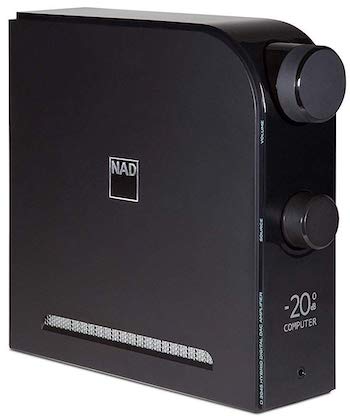
Check on Amazon
Main Features
- 2 x 60W Hybrid Digital Amplifier with low distortion and high current capability.
- Two-Way Bluetooth powered by Qualcomm aptX HD audio for high-quality wireless streaming.
- Asynchronous USB 24/192 Input supporting MQA and DSD for high-resolution digital music playback.
- HDMI Audio Return Channel for easy connection to your TV.
- Coax and Optical Input, MM Phono and Line Input, Preamp Out, and Sub Out for increased connectivity options.
Fulll Review
Previously, we deemed the NAD D3020 V2 to be our best budget app; this is its successor. The NAD D3045 doubles the output power to 60 watts and adds truly novel features. Two-way Bluetooth is our particular preference since it allows you to not only send audio to the amplifier, but also have the amplifier send audio to, say, a pair of wireless headphones.
This amplifier includes a phono stage for a turntable and an HDMI ARC channel for use with a television. This time around, NAD has really surpassed themselves, and while this amplifier is no longer budget-friendly, it provides everything you could possible need. The only concern we have with it is that it is a bit overpriced at launch. Comparatively, the original NAD D3020 V2 costs $300 less, and while it lacks the same sophisticated capabilities, many of them are still present, like the phono preamp and aptX Bluetooth. As good as this amplifier is, paying an additional $300 for it seems excessive.
We are also quite shocked by the power range, which consists of 60 watts RMS and 80 watts peak. This is fairly restricted, and although it is not a huge issue, it may make selecting a speaker difficult. Nonetheless, there are few few amps on this list with this many capabilities, and if the price drops a bit, this will rocket to the top of our recommendations.
Check on Amazon
#7. Audiolab 6000A

Check on Amazon
Main Features
- Integrated amp
- 50X2 into 8 Ohms
- Blue Tooth enabled
- On board ESS 9018K2M DAC
- Three operating modes
Fulll Review
The Audiolab 6000A is one of our favourites due to its spacious and detailed sound staging. It appears to create a system with a bit more presence and realism, making it easy to determine the location of specific instruments, which is quite useful. Numerous amplifiers are already capable doing this, but Audiolab appears to devote a particular emphasis on it, and the results are really advantageous.
Moreover, the audio quality is of a good degree, and it is enhanced by an extensive collection of features that includes Bluetooth. The major issue with the Audiolab 6000A is that it fails to differentiate itself sufficiently from comparable devices on the market. The design is uninspiring and lacks the sophistication of the Cambridge Audio CXA61. Only the more expensive NAD D3045 can send and receive data in both directions, despite its Bluetooth capabilities.
Additionally, the Totem Kin Amp’s digital to analogue converter (DAC) is superior. To put it another way, the 6000A is a superb workhorse amplifier that is capable of doing all tasks admirably, but it is not quite durable enough to outlive the competition.
Check on Amazon
#8. Sonos Amp
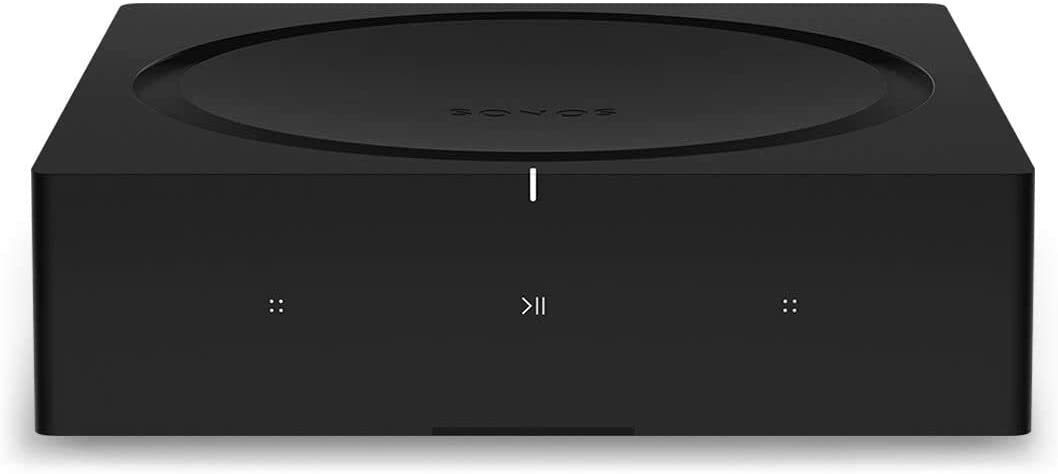
Check on Amazon
Main Features
- The versatile amplifier for powering all your entertainment
- Connect everything from your turntable and stereo to your wired speakers to enjoy vinyl, CDs, stored audio files, and streaming. You can even power outdoor speakers and expand your Sonos system to the backyard
- Enjoy stereo sound for shows, movies, and video games when you connect Amp to your speakers and TV. Wirelessly add a pair of Sonos One surrounds for immersive home theater
- The rack-mountable design features a specially developed heatsink for optimized airflow and heat management
- Get brilliant sound without compromising space or design with Sonos Architectural by Sonance, a collection of in-ceiling, in-wall, and outdoor speakers optimized for Amp
Fulll Review
Streaming music through a Sonos system has always been simple, and with the release of the Sonos Amp, their services can now be connected to a pair of passive speakers. The Amp now has Wi-Fi connectivity in addition to its usual stereo amp capability, making it functionally equivalent to any other stereo amp. Once linked, you will be able to stream music from Spotify, Tidal, or any other provider you choose.
It also doesn’t hurt that the Amp looks great, with a sleek design that complements other Sonos products. Having said that, we suspect that the sound quality of this amplifier is less essential to you than its overall convenience. If you’re searching for something with a little more energy and detail, consider the Denon PMA-600NE, which is mentioned above.
Despite the fact that their ease of use is not equivalent to that of the Sonos Amp, the audio quality of these versions is comparable to that of the Sonos Amp. Furthermore, we were unable to obtain an answer from Sonos as to whether the rated 125 watts per channel represented RMS or peak power. The Sonos Amp’s range of capabilities, on the other hand, ensures that it will be included on this list; so, it is undoubtedly an option that you should consider for your home system.
Check on Amazon
#9. Marantz PM6007

Check on Amazon
Main Features
- Frequency Response: 10 Hz - 70 kHz
- Signal to Noise Ratio MM: 83 dB
- Power Consumption: 155 W
- Power Output (8 / 4 Ohm RMS): 45 W / 60 W
- Dimensions (WDH): 17.3" x 14.6" x 4.1"
Fulll Review
You’ll have to accept the fact that the PM6007 has a rather uninteresting design, but there’s no denying that the sound quality it produces is superb. The new DAC chip installed by Marantz has yielded impressive results: the sound is rich and powerful, with a high level of clarity.
You also get two filters for customising your sound, as well as a fantastic phono stage that compares favourably to the Denon PMA-600NE, which is our top recommendation for vinyl. One area where the Marantz PM6007 falls short is connection. Due to the lack of any form of Bluetooth technology, any connection created in this location must be hardwired.
Despite the fact that this is not a deal breaker, it is frustrating that, despite all of the attention paid to sound quality and customisation, Marantz remains trapped in the past when it comes to product design and functioning. Given that companies like S.M.S.L, Cambridge, and Sonos are continually evolving, you may want to look elsewhere. If you prefer to get your music via wireless means, there are undoubtedly better options available. Regardless of whether or not they sound exactly like the original.
Check on Amazon
#10. Cambridge Audio AXA35

Check on Amazon
Main Features
- ✓ SIMPLE DESIGN, AMAZING SOUND – Cambridge Audio designed the AXA35 to be a perfect entry level amp for turntable and audio enthusiasts. The AXA35 has 35 watts per channel, 1/4 inch headphone socket, and 4 analogue inputs.
- ✓ QUALITY ENGINEERING – Inside the AXA35 you’ll find high quality components: featuring short signal paths, high spec heat sink, and damped power supply for the best sound quality in its class.
- ✓ EASILY CONNECT ALL OF YOUR EQUIPMENT - The AXA35 has four analogue inputs so you can connect your CD player, streamer, tv, or game consoles for an incredible sound experience.
- ✓ CONNECT BLUETOOTH OR AUDIO STREAMER – The AXA35 features a USB port so you can connect a Bluetooth receiver (sold separately) or smart audio streaming device such as Google Chromecast Audio to enjoy wireless freedom and amazing sound.
- ✓ TECH SPECS - POWER OUTPUT 35 watts (into 8 Ohms), FREQUENCY RESPONSE (-3dB) 5Hz - 50kHz, S/N RATIO (REF 1W) >82dB (unweighted), INPUT IMPEDANCES 47k ohms, MAX. POWER CONSUMPTION 260W, BASS/TREBLE CONTROLS Shelving, ultimate boost/cut +/- 10dB @ 100Hz and 10kHz
Fulll Review
The Cambridge Audio AXA35 is a decent stereo amplifier, however it falls on the simpler end of the range. The amplifier’s audio quality is well-balanced and free of noise, making it a good option to the bass-heavy Onkyo A-9110 and the treble-focused Denon PMA-600NE, which are in the same price range.
The product’s design, which incorporates all of Cambridge’s effective strategies, such as inverted labelling on the rear ports, is a strong selling factor and one of its most appealing characteristics. It’s amazing to see that the company, which is already responsible for creating some of the best apps now available (the CXA61 is currently one of our top three, above), is releasing a more wallet-friendly product.
In light of this, anyone in the market for an inexpensive amplifier should consider the AXA35, despite the fact that, as indicated previously, it provides nothing that other amplifiers do not already do. Additionally, there is no digital audio converter (DAC), which may be an issue for those seeking a single-box solution. If this describes you, you should investigate the Denon that was previously mentioned. The flimsy and incorrect feel of the remote control was another cause of our dissatisfaction. Even if the AXA35 is not the best amplifier on this list, it is nevertheless of adequate quality to merit your consideration.
Check on Amazon
Stereo Amp Comparison Table
| Stereo Amp | Price | Weight | RMS* | DAC? | Peak** | Dimensions |
|---|---|---|---|---|---|---|
| Peachtree Audio nova300 | $1,799 | 17lbs | 300W/8Ω | Yes | 400W/8Ω | 14.8″ x 13.25″ x 4.4″ |
| Cambridge Audio CXA61 | $999 | 18.3lbs | 60W/8Ω | Yes | Unavailable | 16.9″ x 13.4″ x 4.5″ |
| Onkyo A-9110 | $329 | 15.4lbs | 50W/4Ω | No | Unavailable | 17.1″ x 13″ x 5″ |
| Denon PMA-600NE | $400 | 15lbs | 90W/8Ω | Yes | Unavailable | 17.1″ x 12.1″ x 4.76″ |
| Anthem STR | $5,000 | 40lbs | 200W/8Ω | Yes | Unavailable | 17.5″ x 17″ x 6.3″ |
| S.M.S.L AD 18 | $145 | 3.2lbs | 80W/8Ω | Yes | Unavailable | 10.8″ x 9.1″ x 2.9″ |
| NAD D3045 | $749 | 5.7lbs | 60W/8Ω | Yes | 80W/8Ω | 10.4″ x 9.,3″ x 2.8″ |
| Heaven 11 Billie | $1,500 | 12lbs | 60W/8Ω | Yes | Unavailable | 14.25″ x 8″ x 2.75″ |
| Parasound NC 200 Int. | $1,195 | 18.3lbs | 110W/8Ω | Yes | Unavailable | 17.25″ x 14.75″ x 2.5″ |
| Hegel H95 | $2,000 | 23.4lbs | 60W/8Ω | Yes | Unavailable | 16.9″ x 12.2″ x 3.9″ |
| Schiit Ragnarok | $1,499 | 32lbs | 60W/8Ω | Optional | Unavailable | 16″ x 13″ x 3.9″ |
| Audiolab 6000A | $999 | 17.2lbs | 50W/8Ω | Yes | Unavailable | 17.5″ x 13″ x 3.15″ |
| Sonos Amp | $899 | 4.6lbs | 125W/8Ω | Yes | Unavailable | 8.2″ x 7.3″ x 2.5″ |
| Totem KIN Amp | $699 | 5.3lbs | 100W/8Ω | Yes | Unavailable | 10″ x 9.25″ x 2.3″ |
| Marantz PM6007 | $799 | 16.7lbs | 45W/8Ω | Yes | Unavailable | 17.3″ x 14.5″ x 4″ |
| Topping PA3 | $119 | 1.14lbs | 70W/8Ω | No | Unavailable | 6.6″ x 4.7″ x 1.5″ |
| Rega Io | $595 | 6.4lbs | 30W/8Ω | No | Unavailable | 7″ x 11.4″ x 2.68″ |
| Cambridge Audio AXA35 | $350 | 12.3lbs | 35W/8Ω | No | Unavailable | 3.3″ x 16.9″ x 13.2″ |
*RMS = RMS/Continuous Power **Peak = Peak/Dynamic Power
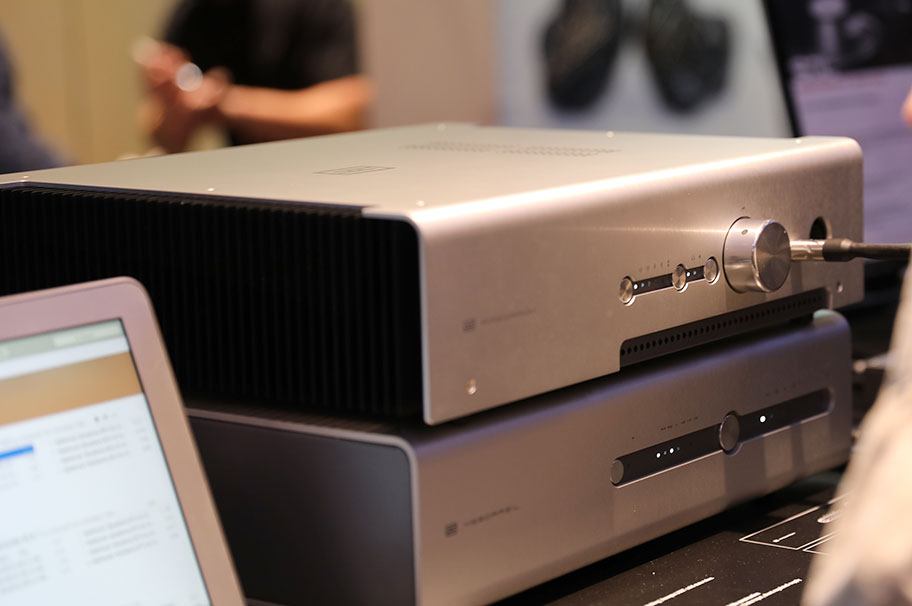
Stereo Amp Buying Advice
What Is A Stereo Amp?
Your stereo’s amplifier is its heart. Source-emitted audio signals are weak. If you listened carefully, you’d barely hear them. The stereo amplifier uses power supply current to increase the source sound’s volume. Internal circuitry translates sound into a format your speakers can understand. Each amplifier has two sound channels. Certain amplifiers are expensive because they amplify and sharpen the sound. We’ll also recommend bookshelf speakers, as is our custom. Stereo amplifiers can eventually cost five or six figures.
How much to spend? Most people can afford $5,000. Audiophiles may disagree, but we feel you reach a point of diminishing returns. We assume quality disparities level off above $5,000. The $57,000 D’Agostino Momentum Integrated is better than the $499 Denon PMA-600NE, but in general, you pay more for more power. Most people don’t need that much power.
A 100-watt-per-channel amplifier should be plenty for most people. As long as you have a great amplifier and speaker system, you may save money. We recommend spending a little on an amplifier. It would be a waste to match a $3,000 amplifier with speakers costing less than a sixth of that much; the speakers won’t express the amplifier’s intricacies. If you must pick, pay more for your speakers than your amplifier. They’re your signal chain’s most important link.

Integrated vs. Pre/Power Amps
While researching this product category, you may come across a confusing term: integrated amplifier. Here’s why this isn’t the same as a power amplifier. A preamp stage and a power stage are required for any amp to function properly. These operate together to boost the signal to a level where humans can hear it. When they’re all in one box, it’s called an integrated amplifier.
If they’re separate, they’re known as a preamplifier and an amplifier, and they’ll be discrete pieces of equipment – normally designed to be stacked on top of one another if built by the same manufacturer. There are various advantages to having separate pre and power amplifiers. The first is that you may swap out components as needed, giving you complete control over your sound.
The drawback is that it is more expensive to have two different pieces of equipment. Buying an integrated amplifier, which has both components in one enclosure, is more easier and more common for most individuals. Obviously, you won’t be able to change anything later, but the cost will be lower and the convenience will be much higher. As previously stated, all of the amps on our list are integrated amps.
RMS vs. Peak Wattage
Wattage is the amount of power that an amplifier produces. It’s not quite the same as volume – after all, you can adjust volume independent of power – but it gives you an indication of how loud an amplifier can get and what kind of speakers it can drive. It’s really useful to know while you’re putting together your hi-fi system. You’ll notice that we’ve included RMS, or continuous wattage, in the lists for our amplifier options.
This refers to the amplifier’s total volume over a long period of time; while the length of time varies depending on the manufacturer, it’s generally seen to be a good predictor of how much power the amplifier will produce at ordinary listening settings. By the way, don’t bother asking us to define RMS (Root Mean Square). We are defeated by the math.
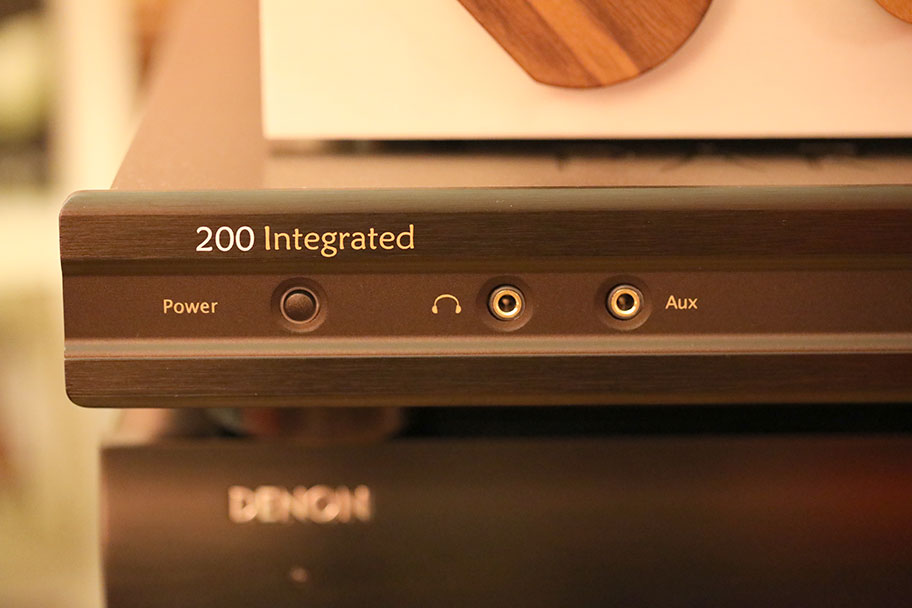
Peak wattage, which we’ve included where feasible in our table, is the amplifier’s absolute maximum output: a single short burst of power. That’s really it. Average vs. maximum. Many manufacturers don’t even bother to provide the peak, making things incredibly simple! However, some do, and this can be useful when selecting speakers. The Peachtree Audio nova300 ($2,199) is a nice example: 300 watts RMS and 450 watts peak.
Peak power is nearly never necessary; if you pump things that loudly, you’re almost certainly going to harm your hearing. However, knowing these two numbers provides you a decent indication of how strong an amplifier can be, which is helpful when deciding which speakers to pair with your amp.
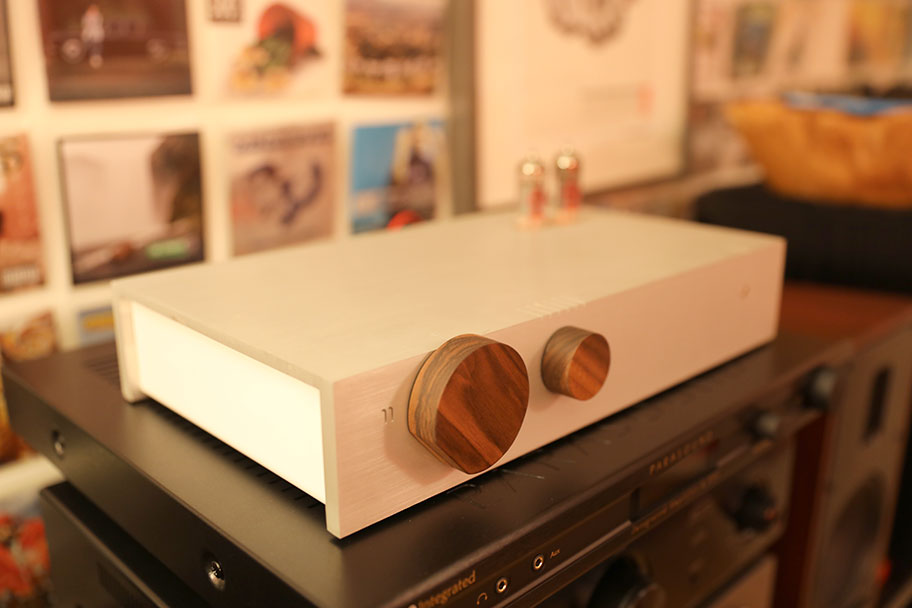
DACs Explained
Digital to Analog Converters are also known as DACs. Your audio is made up of ones and zeros until it passes through one of them, at which point it is turned into electrical signals that power the speakers and provide sound. One of these is required. The good news is that your audio source, especially if it’s a laptop, tablet, phone, or CD player, is likely to already have them.
What’s the bad news? These may be inadequate, and it may be worthwhile to purchase a separate DAC. Not every amplifier on our list includes a built-in DAC. Check everything before you buy. If we had to choose an amplifier with the best DAC, we’d definitely go with the $1,195 Parasound NewClassic 200 Integrated, which provides excellent conversion. Although it isn’t our favourite amplifier, it takes the cake in this category.

Stereo Amp Classes Explained
Don’t get too caught up in the many varieties of amplifiers. While knowing the differences between Class T, Class AB, tube, monoblock, and the like is always useful and we’ve highlighted some of the variations in the models below – amp quality is now high enough that you can comfortably leave this out of your purchasing considerations if you want to.
The amount of channels you require, your existing setup, your sources, and the space you have available should all influence your amplifier selection. However, this type of information is always useful. So, in no particular sequence, here’s a rundown of some of the more commonly used lingo.
Class A
A popular configuration in which both output stages are constantly active. In practise, this implies that distortion is extremely low, despite the amps’ inefficiency.
Class B
Only one output stage can be active at any given time, which improves power efficiency but sometimes introduces distortion at frequency crossover points.

Class A/B
As you might expect, this is a mix of the two types above that maximises benefits while minimising downsides. This circuit is seen in amps that are moderately efficient and have low distortion.
Class D
Active transistor switches are used in this type. The electrical explanation is a little more sophisticated, but it boils down to: Class Ds are extremely energy efficient and are frequently smaller and lighter than other variants. They don’t get as heated either. Note that if you see Class T somewhere, it’s a Tripath variant of this class. You won’t find many of these; Orb Audio’s old Mini-T, which is now discontinued, was one of the few in this category.
Budget Stereo Amplifiers- FAQs
How do I choose a stereo amplifier?
Budget, performance, sound quality, and the number of inputs are all factors to consider when purchasing a stereo amplifier. You have to pick your battles when you’re on a budget. One amplifier, for example, may have a large number of inputs but poor sound quality. You must choose which features and aspects are most critical to your use case.
Do expensive amplifiers sound better?
This question has no true objective answer. When the price of an audio component rises, it is usually due to more expensive internal components. This is what creates a significant difference in sound quality. While higher-end amplifiers might sometimes sound better, it all relies on the components utilised, fine-tuning, and sound signature. Brand recognition and image are also important factors. You don’t want to underpower your equipment, which is a common mistake made by newbies. So you want to spend a lot of money on speakers, but you want to get an amp that fits your budget and can give your gear enough of power.
How much should I spend on speakers vs AMP?
The fact is, when it comes to spending money on an amp and speakers, there is no ideal ratio. In general, you should spend as much money on speakers as you can. They’ll have the most influence on sound quality. When it comes to the amplifier, make sure you purchase one that can readily power your gear.
Do amplifiers actually improve sound quality?
Many newbies ask themselves this question. Yes, amplifiers do improve sound quality, and the difference can be significant. This is because it expands the audio system’s power headroom. With a competent amp, you can listen to music at higher volumes without distortion. When people claim amps increase sound quality, they usually mean this. Some units can even vary the sound signature depending on the unit.









